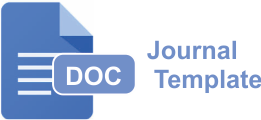Detecting Tax Aggressiveness through Profitability, Leverage, Inventory Intensity and Company Size
DOI:
https://doi.org/10.26740/jaj.v16n2.p233-243Keywords:
Firm Size; Inventory Intensity; Leverage; Profitability; Tax AggressivenessAbstract
Objectives: This study aims to examine the effect of profitability, leverage, inventory intensity, and firm size on tax aggressiveness in manufacturing companies listed on the Indonesia Stock Exchange during the 2021–2023 period. Tax aggressiveness is measured using the Cash Effective Tax Rate (Cash ETR). Methods: A quantitative approach was employed using multiple linear regression to test the proposed hypotheses. Results: The results show that profitability has a significant negative effect on tax aggressiveness, while leverage and firm size exhibit significant positive effects. Inventory intensity does not show a significant relationship. These results align with legitimacy theory, agency theory, and political cost theory in explaining internal corporate motivations for tax planning strategies. Implication: Practically, this study provides implications for tax authorities to focus on high-leverage and large-scale entities, and to promote fiscal transparency through risk-based tax supervision. Theoretically, this research contributes to the growing body of literature on corporate tax avoidance in developing countries, especially through the use of alternative indicators such as Cash ETR and BTD.
References
Akbaş, H. E., & Canikli, S. (2021). The Effect of Firm Profitability on Tax Avoidance: Evidence from Borsa Istanbul. Accounting and Finance Review, 6(2), 78–91.
Annisa, N. A., & Kurniasih, L. (2012). Pengaruh corporate governance dan karakteristik perusahaan terhadap tax avoidance. Jurnal Akuntansi dan Auditing Indonesia, 16(2), 103–125.
Badan Pusat Statistik. (2022). Produk Domestik Bruto Indonesia Menurut Lapangan Usaha 2021. Jakarta: BPS RI.
Chen, S., Chen, X., Cheng, Q., & Shevlin, T. (2010). Are family firms more tax aggressive than non-family firms? Journal of Financial Economics, 95(1), 41–61.
Chircop, J., & Novotny-Farkas, Z. (2021). Leverage and Tax Avoidance: The Role of Financial Reporting Systems. European Accounting Review, 30(1), 23–48.
Direktorat Jenderal Pajak. (2021). Laporan Kinerja DJP 2021. Jakarta: Kementerian Keuangan RI.
Dyreng, S. D., Hanlon, M., & Maydew, E. L. (2008). Long-run corporate tax avoidance. The Accounting Review, 83(1), 61–82.
Frank, M. M., Lynch, L. J., & Rego, S. O. (2009). Tax reporting aggressiveness and its relation to aggressive financial reporting. The Accounting Review, 84(2), 467–496.
Gaur, A., & Agarwal, R. (2022). Determinants of Tax Avoidance Practices in Indian Manufacturing Firms. Asian Journal of Accounting Research, 7(1), 55–69.
Ghozali, I. (2018). Aplikasi Analisis Multivariate dengan Program IBM SPSS 25. Semarang: Badan Penerbit Universitas Diponegoro.
Hanlon, M., & Heitzman, S. (2010). A review of tax research. Journal of Accounting and Economics, 50(2–3), 127–178.
Jensen, M. C., & Meckling, W. H. (1976). Theory of the firm: Managerial behavior, agency costs and ownership structure. Journal of Financial Economics, 3(4), 305–360.
Kaya, D., & Doğan, M. (2020). The Effect of Firm Characteristics on Tax Avoidance: Evidence from Turkey. Journal of Accounting and Taxation, 12(2), 89–98.
Lanis, R., & Richardson, G. (2012). Corporate social responsibility and tax aggressiveness: A test of legitimacy theory. Accounting, Auditing & Accountability Journal, 25(1), 75–100.
Lanis, R., & Richardson, G. (2012). Corporate social responsibility and tax aggressiveness. Journal of Accounting and Public Policy, 31(1), 86–108.
Lanis, R., & Richardson, G. (2020). Corporate Social Responsibility and Corporate Tax Aggressiveness: A Test of Legitimacy Theory. Accounting Forum, 44(3), 254–281.
Modigliani, F., & Miller, M. H. (1963). Corporate income taxes and the cost of capital: A correction. The American Economic Review, 53(3), 433–443.
Nugroho, R., & Firmansyah, D. (2021). The Effect of Profitability and Leverage on Tax Avoidance. Jurnal Akuntansi dan Keuangan, 23(1), 47–55.
OECD. (2023). Corporate Tax Statistics – 4th Edition. Paris: OECD Publishing.
Richardson, G., Taylor, G., & Lanis, R. (2021). The Impact of Board Independence on Corporate Tax Aggressiveness: Evidence from OECD Countries. Journal of International Accounting Research, 20(1), 77–98.
Sari, I. G. A. M., & Utami, M. E. (2021). Pengaruh profitabilitas terhadap agresivitas pajak. Jurnal Akuntansi dan Keuangan, 23(1), 12–21.
Sugiyono. (2021). Metode Penelitian Kuantitatif, Kualitatif dan R&D. Bandung: Alfabeta.
Sukma, R. Y., & Azizah, D. F. (2020). Inventory Intensity dan Agresivitas Pajak. Jurnal Akuntansi Multiparadigma, 11(2), 329–340.
Taylor, G., & Richardson, G. (2022). The Influence of Financial Statement Transparency on Tax Avoidance. Australian Tax Forum, 37(2), 210–235.
Watts, R. L., & Zimmerman, J. L. (1986). Positive Accounting Theory. Prentice-Hall.
Wulandari, T., & Putri, A. P. (2022). Pengaruh Ukuran dan Profitabilitas terhadap Agresivitas Pajak. Jurnal Akuntansi dan Perpajakan Indonesia, 6(2), 98–110.
Downloads
Published
How to Cite
Issue
Section
License
Copyright (c) 2025 Harnovinsah Harnovinsah, Rafrini Amyulianthy Amyulianthy, Erwin Permana

This work is licensed under a Creative Commons Attribution-NonCommercial 4.0 International License.
 Abstract views: 1046
,
Abstract views: 1046
, PDF Downloads: 771
PDF Downloads: 771

















